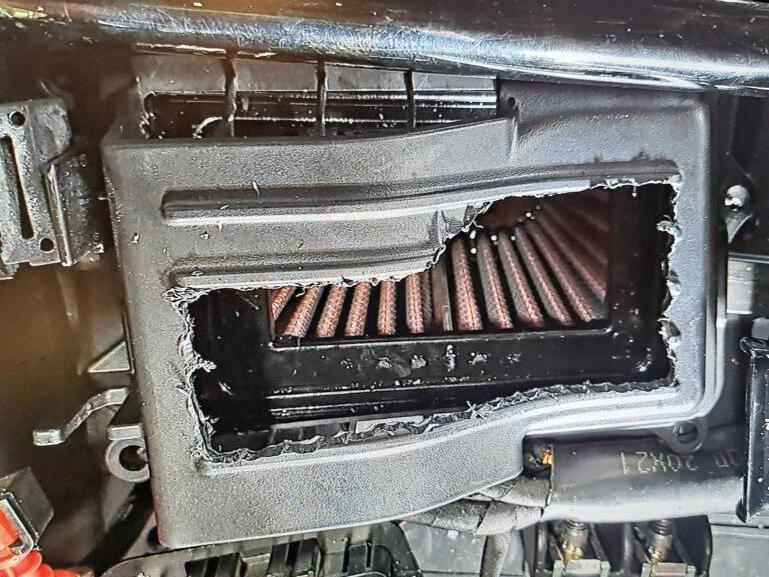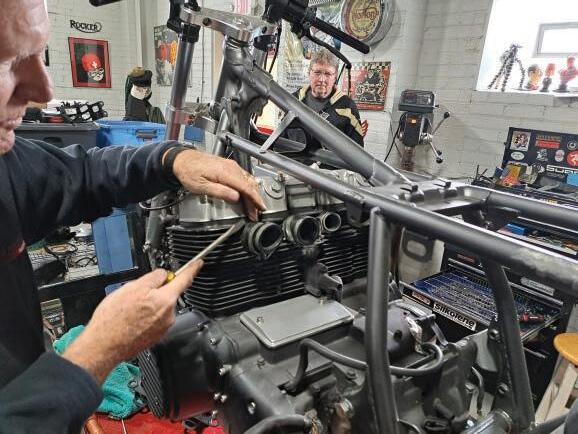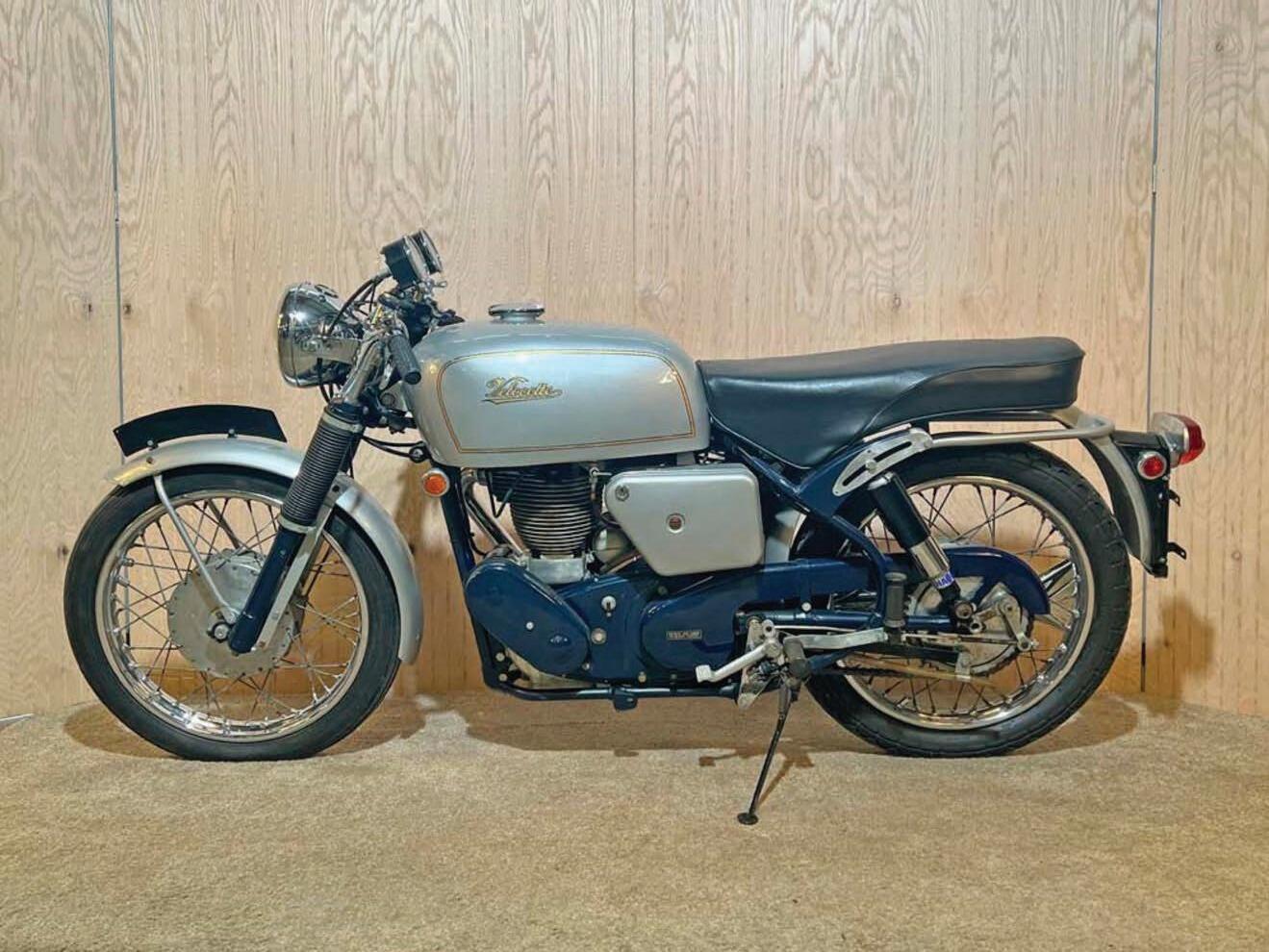
12 minute read
Legacy Women In Motorcycle History


Advertisement
Compiled by The Staff
The storied history of motorcycling is mostly a chronicle of male riders, who have distinguished themselves in travel, competition and custom biking. Far less is known of the strong, fearless females who have made their own marks on two-wheeling over the past decades. Though not comprehensive by any means, our timeline highlights just a few of these biking visionaries. Ride on, sisters.
Bessie Stringfield
In 1930, a time when Black travelers could seldom rent hotel rooms or eat in restaurants, Bessie Stringfield, a dedicated motorcycle enthusiast, set off for one of many cross-country solo rides. The charismatic Stringfield continued the Van Buren sisters’ quest for government recognition, becoming the first Black female Army courier during WWII while serving as an ambassador for motorcycling with her friendly demeanor. Often forced to sleep aboard her Harley-Davidson FL Panhead when no rooms were available to her, Stringfield remained optimistic about twowheeled travel.

1916 when Adeline and Agusta Van Buren made a decision that would raise eyebrows – and expectations of what young women could achieve. The pair, descendants of President Martin Van Buren, embarked on a cross-country motorcycle adventure that summer, riding a pair of 750cc Indian PowerPlus twins from New York to San Francisco. Enduring rough unpaved roads, unpredictable weather and hostile police (they were arrested in Chicago for wearing “men’s” leathers) the pair reached their destination in early September. Though their goal of proving that women were capable of serving as US Army dispatch riders was unsuccessful, their journey has inspired countless women riders ever since.

When harassed by a redneck sheriff while riding through the Jim Crow South, she staged in impromptu stunt-riding exhibi- wife of a motorcycle dealership owner, Swain was the first woman to qualify for the Isle of Man TT in 1962. After breaking a lap record in the 50cc class at Britain’s Brands hatch raceway, she entered the TT riding an Italian Itom single. Serving as her own tech crew, she built her own engines and finished 22nd of 25 entries, which emboldened Swain to race again in 1963. However, race organizers deemed the risk of having a female racer killed while competing in the TT too much to allow and her racing license application was denied. A fan favorite, an exhibit of her career is now on display at the Isle’s Manx Museum. veteran’s affairs outreach work since founding Motorcycle Missions in 2017. The former nurse who graced the cover of issue #63 aboard her self-built Ducati Scrambler cafe racer, first explored customizing motorcycles as a form of therapy after an abusive marriage. Today Hess has won trophies at some of the country’s top custom bike shows and helps US service vets tackle PTSD through Motorcycle Missions where group bike builds provides camaraderie and stability to dozens of members nationwide.
During the late 1950s, German rider Anke Eve Goldman became the first woman to pen riding tests of new machines for motorcycle magazines around the world. From “Cycle World” to her native Germany’s “Motorrad,” the former schoolteacher’s byline became familiar and respected as did her work founding the Women’s International Motorcycling Foundation in Europe. Striking at over 6’ tall and dressed in a onepiece black leather racing suit, Goldman became a frequent topic of magazine features and photo essays while working as a test rider and brand ambassador for BMW. She provided the inspiration for Marianne Faithful’s character in the 1968 film “Girl on a Motorcycle” and later designed and rode the first 100 horsepower MV Agusta cafe racer custom in Germany.





Often referred to as the female Evel Knievel, Debbie Lawler was the world’s most famous female motorcycle stunt rider and often joked that Knievel was the male Debbie Lawler. The former fashion model began competing in motocross with support of her father and racer Ben Lawler at age 14 and was soon performing jumps over as many as 76 parked cars. In 1974 she broke one of Knievel’s records by vaulting her Suzuki TM250 over 101 feet, catching the nation’s attention when the feat was broadcast on ABC’s “Wide World of Sports.” A genuine rebel, Lawler combined fierce competitiveness with irreverent spirit, water-skiing in her spare time while refusing to wear a bra (unless jumping) and smoking two packs of cigarettes per day. A generation of kids laid tire in their living rooms with her toy stunt bike which, for a time, outsold Kneivel’s.


Following in the tire paths laid down by Beryl Swain and others, England’s Maria Costello set her sights on competing at motorcycle racing’s highest levels. After winning several regional club racing meets, she was drawn to the Isle of Man TT where she competed for the first time in 1998. A serious crash the next year saw her recover to attain a Guinness World Record for the fastest woman to lap the 37.75-mile course at an average speed of 114.73 MPH. In a daunting career where Maria has broken some 24 bones, she’s persevered, becoming the first women to stand on the podium during the 2005 Manx Grand Prix, obtaining the title of member of the Order of the British Empire from the Crown while being named the BBC Sports Personality of the year in 2005. Still racing in her th year, she also works as a journalist for several motorsports news outlets.

The co-founder of top-fuel motorcycle drag racing team Alp Racing, since 2009, Gaskin has also served as crew chief for husband Alp Sungurtekin’s annual record-breaking runs at Bonneville Speed Week in Utah. When she’s not engineering vintage air-cooled Triumphs to achieve speeds in excess of 170MPH, Gaskin, who holds several master’s degrees in several fields including psychology and cultural anthropology, works as a professional fashion model and part-time motorcycle drag racer and speed tester. Inspirational doesn’t even begin to cover it.



Throwing off Indian society’s strict conventions concerning women’s roles, Esha Gupta has proven adventure riding knows no boundaries. After meeting a group of motorcyclists during a backpacking vacation in 2012, she soon abandoned her corporate career and began riding cross-country full time. Her first trek was a formidable one – taking on the Indian version of the grueling Iron Butt rally, known as the Golden Quadrilateral. Piloting her Bajaj Avenger streetbike over 3,700 miles to visit the Indian subcontinent’s biggest metropolises, she drew international media attention and the admiration of millions. Her initial journey was undertaken at a dangerous time for Indian women after highprofile attacks had made much of the country nervous about female safety. “I wanted to send a message that was contrary to everyone’s belief, that India is definitely a safe country for women,” she said.






Like most classic bike enthusiasts, Jeff Hanes has unused parts lying about. Back in 2018, he picked up a frame and engine from a pair of dismantled BSA twins, with no real plans for their immediate future. “Before my tenure, my friend Mark Oldham and his brother Ron collectively owned the frame since about 1998 and motor since 2009. When I picked it up, the bike was mocked up, with the motor just sitting in the frame, a non-installed Moto Guzzi front end, old mismatched wheels and a bastard tank. Nothing was going to fit or work with the frame, so it was taken down to motor and frame only,” the owner recalled.





Jeff admitted picking up the basket case ride on a whim, being generally unfamiliar with old British twins and the BSA brand in particular. However, he was convinced to perform some online market work for his buddy’s car sales business in return for the pile of parts, which sounded like a great
“Before the build I had very little knowledge regarding British bikes,” he said. “I have always been intrigued with European cars and bikes and I’ve owned old BMW airheads and K bikes in the past. One of my favorites was a 1982 R100 I rescued from a friend’s estate in 2017.”
Like many Yanks, it was the mystique of the British motorcycle industry along with the history and the culture surrounding it that attracted Jeff to the BSA.


The problem Jeff faced concerned what direction to go with the pile of non-matching bits. “When I first got the bike I was all over the place with what style to build. Would it be a bobber, tracker, brat, or cafe?” he wondered aloud. Due to the disparate collection of parts he’d amassed, a full-on restoration wasn’t in the cards. “Original was out of the question, as there was not one original piece with the bike, quite literally a 1963 frame and

1966 motor. After much debate, I decided to go for a hot rod custom. So basically it turned out to be a special blend,” Jeff said.
Lucky for Jeff, BSA’s A50 chassis – also known as the 500cc Royal Star – and the A65 – or 650cc Lightning – motor were fairly adaptable pieces of kit. The Birmingham-based manufacturer may have adorned their broad lineup of twins with different letter and number designations and an intriguing roster of names, but the company’s roadbikes share a similar platform and basic mechanical DNA. The unit construction twins were introduced in 1962 and their unusual crankcase shape, dubbed the Power Egg by detractors, was shared throughout the lineup.
Jeff’s Lightning engine would prove an easy mate to the Lightning chassis which utilized many identical parts from swingarms to front ends and running gear components.
However, before the melding of machines could begin in earnest, Jeff still faced the considerable hurdle of locating “a British bike guru to get the build started. After contacting many local mechanics with my vision, no one was interested in tackling the project,” he recalled. As a result, his British dream bike concept was shelved for a couple of years. Fortunately, an uncle who has been a motorcycle and car enthusiast for over 50 years told Jeff of an old friend, mechanic and drag racer by the name of Chris Weldon. It turns out Weldon had built classic British motorcycles for a collector in town. “Best of all, he actually lives only five blocks from my house!” Jeff said.
After a few meetings Weldon was convinced to take on the custom build project. Soon thereafter the twin cylinder motor was churning out its Birmingham melody.


Having focused on creating an everyday re- high-output stator, fresh wiring and a new
Jeff says Weldon was in possession of a sizable BSA parts stash which helped things along, though a few unobtainable bits had to fabricated from scratch. During the rebuild, the Beeza was fitted with a front end from a Japanese bike for its disc brake stopping capabilities, though Jeff later swapped it out for a Triumph Bonneville fork which utilizes a twin leading shoe drum unit with nearly as much stopping power.
“My performance goals were to have a practicable daily rider,” Jeff said. “Easy starts and dependability were top of the list. Of course it had to sound great, and wake up a few neighbors on those early Sunday morning rides. Speed was not much of a concern as the bike would not be ridden on the interstate where 100MPH is standard these days.”
With no concerns about by-the-book authenticity at stake, Jeff felt free to adapt parts from other BSA models as he saw fit. That explains the four-gallon fuel tank culled from a 1967 BSA Lightning that was stripped down before being custom painted with the sprayer, careful to leave some of the original chrome teardrop side panels.
The stock seat loop was shortened 3.5” and the seat built by combining a one-off metal pan and handmade, cowhide (this is Texas, after all) upholstery. Other Brit bits include 21st century Triumph Bonneville shocks, a lowered vintage Triumph rear fender and a set of polished aluminum Borrani rims. The Triumph twin leading shoe front hub and rear conical unit were both painstakingly re- stored originals laced with polished, stainless steel spokes. And those with a keen eye for these things will notice the Norton headlight bucket fitted with a modern LED light from Revival Cycles. And after sampling several pair of what Jeff calls “non-functioning vintage instruments,” the bike now runs reproduction gauges that work quite well.
Jeff said the completed bike “is a gas to ride. It handles really well through the twisties and I’ve clocked about 75MPH so far. I believe it could go faster but I don’t want to push the old girl too hard yet.”
The uniqueness of owning and riding a vintage BSA is a large part of the reward for a lengthy, often uncertain project, he said. “The bike harkens back to a simple way of life for me. Many younger people have never heard of or seen a BSA and motorcycle and gearheads offer a bit of a perplexed look, then a noble thumbs up.” CR






Dan Torres has unusual tastes in motorcycles. When selecting a donor bike to customize as his entry into one of the nation’s biggest custom shows, he didn’t make an obvious choice with a Triumph Bonneville or a Honda CB750. Nor did he select a motorcycle with a thick aftermarket parts catalog that would make his task much easier. Instead, he picked Harley-Davidson’s short-lived Street 750, a misfit machine if ever one existed.

“I was excited when I heard H-D was putting out a 750, but I hated the bike when it first came out. It was so ugly I couldn’t understand what they were doing, but not long after, I saw one for sale really cheap and picked it up thinking I could definitely improve it,” said Torres, owner of custom shop Milwaukee Moto. Being just a few blocks from the Harley-Davidson factory and corporate HQ, Torres sees plenty of Hogs rolling by his shop. However, the Street 750 is never among them, he says.

“That’s why I called the bike Indy because it’s made in India and I bought it in Indiana,” he said of the bike that was dropped from
Harley’s lineup after three short years.
Dan’s original vision was simple: he just wanted to make the water-cooled Harley look cooler than the factory designers had. And since there were no parts to bolt on, he had to find a means to adapt bits from other makes and models bikes to do so.

Lucky for Dan, he happened across a singlesided swingarm from an early 2000s Ducati 748 superbike. While most builders would simply opt for an easier rear end option, Dan, a machinist by trade, envisioned fitting it to the 750’s rear end. As luck would have it, the Italian wheel carrier was a simple bolt-on job, with only a few spacers needed to make the fitment complete. Well, that and some help from modern technology. “In order to get the Ducati shock linkage to work, I had to notch and reinforce the Harley frame, Dan said. “It took a lot of trial and error and some 3D printed parts to finally get it to work. Once I chopped most of the Harley frame away, I had to make a simple subframe which led to a cool, all-aluminum seat and seat hump.”
That meant the Street 750’s dual shocks were carted off for the recycle bin, replaced by a Showa adjustable monoshock unit from the Ducati.
The long, low fuel tank was another prominent aspect of the original 2016 bike that irritated Dan eyes. The profile was all wrong for the neo cafe racer look he had in mind, and from an early 1970s Honda commuter bike came the answer. The CB200Tgas tank had the right lines and width to fit the Harley’s frame, only there was no room for the fuel injector pump and hardware. Dan, not being afraid to experiment with radical modifications, realized he could fit the fueling hardware elsewhere. lines running a good 18” from tank to seat hump. “The CB200 tank wouldn’t fit the stock Harley fuel pump or a skinny Sportster fuel pump so I had to turn to the hot rod world and fitted the bike up with an external fuel pump under that back seat hump along with braided fuel lines and a fuel regulator,” Dan said. In the end, the relocation proves seamless as the bike starts easily and has suffered no fueling issues to date.

Though the 750 came equipped with a decent set of forks and a single front brake rotor, Dan’s vision was bolder, incorporating the cutting-edge braking and damping qualities of a sportbike front end. He adapted a complete fork from a Yamaha YZF-R1 to fit, including the lightweight mag wheels and twin four-piston brake calipers in the mix. A set of custom machined triple clamps from Virginia’s Cognito Moto helped secure the front end to the Harley chassis, while those are Rizoma adjustable rearsets providing rear brake and shifting duties.




The hand-fabricated parts on the 750 are so plentiful, Dan neglected to mention them all. However, after staring dumbfounded at the bike for several minutes, we caught sight of most of his incredible work. That wacky dual exhaust system with the upturned Cone Engineering megaphone mufflers was created in-house on the pipe-bending jig at Milwaukee Moto, and caps off the bike’s racy tail end perfectly. The triangular side covers with gold screening not only look boss, they’re in place to conceal the fuel pump lines and hardware. They mate nicely with the black suede seat with diamond stitching – all details that make Indy look like a factory Harley-Davidson custom, not a motorcycle the factory would rather forget.

When asked how many hours are invested in the bike, Dan laughed and said, “Don’t even ask. Probably about three years and I have little kids running around so I was doing the family thing at the same time. I don’t even think about the time, I just enjoy doing it,” he said. CR











